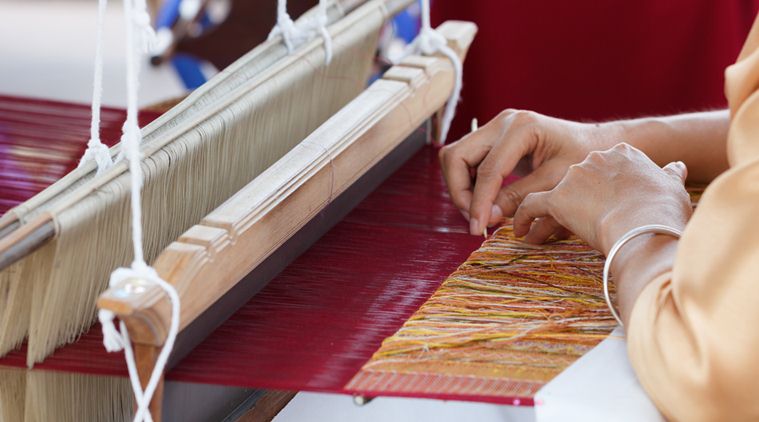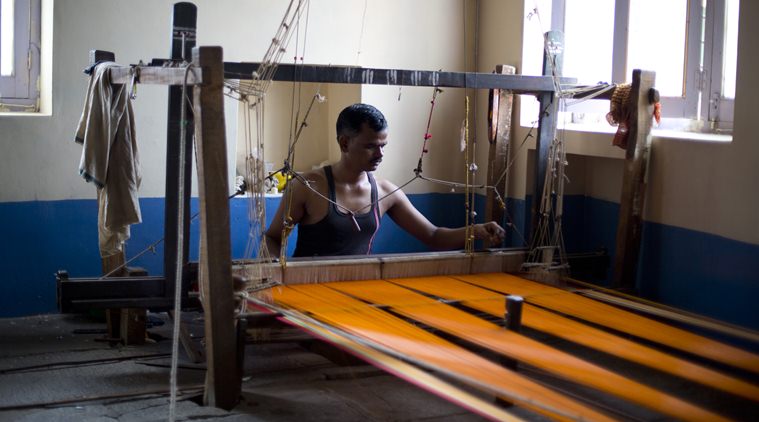 In the late 80s, the All India Handloom Board was reconstituted in its present form, with the Union minister of textiles Sharad Yadav as its chairman. (Photo: Getty Images/Thinkstock)
In the late 80s, the All India Handloom Board was reconstituted in its present form, with the Union minister of textiles Sharad Yadav as its chairman. (Photo: Getty Images/Thinkstock)
Just a week ahead of National Handloom Day (August 7), the government issued an order to dissolve the All India Handloom Board, which functioned under the Ministry of Textiles, with a mandate to advise the government in formulating policy for the handloom sector. In an order dated July 27, 2020, the Ministry called the move “a systematic rationalisation of government bodies in consonance with Minimum Government and Maximum Governance.”
The board is among several advisory bodies working under the Ministry, such as All India Powerloom Board, All India Handicrafts Board, besides cotton and jute advisory boards. With the Minister of Textiles as its chairperson and Textile Secretary as its vice-chairperson, it also had 18 institutional members from various government organisations. Besides advising the government on policy, the board was also tasked with making recommendations to make handicraft sector an effective instrument of reducing unemployment, and to preserve and promote the craft heritage of our handicrafts.
But more importantly, it has been the only organisation with 88 non-institutional members, comprising weavers and artisans from all over India. So practically, it was the only forum where the government could get direct feedback from the stakeholders. It is for this reason that the move has riled many who have invested decades in promoting the country’s handloom.
Craft revivalist Laila Tyabji, Founder of Dastkar, rued “the abolition of the 70-year-old Board, established in 1952 by Pupul Jayakar and nurtured by Kamaladevi Chattopadhyay”. In a Facebook post, she stated: “All these years on, it remained the one official forum, however watered down, where the voices and views of weavers and craftspeople could be expressed directly. One place where representatives of the sector were present in considerable numbers, and were actually empowered to advise the government in policy and sectorial spending.” Tyabji adds, “We will miss that wealth of collective wisdom at a time when craftspeople and the sector are struggling for survival and (need) imaginative solutions.”
Even as Development Commissioner for handlooms, Sanjay Rastogi, refused to comment on the issue, and the Textiles Secretary Ravi Capoor didn’t respond to email, an official in the textiles ministry said, “We have no idea if a new mechanism will be devised to solicit direct feedback from the weavers and artisans”. Meanwhile, the government will launch a new portal for handlooms, where all information regarding schemes and exhibitions will be provided.
It was in 1950, in a newly independent India, that Prime Minister Jawaharlal Nehru had invited noted cultural and handloom activist Jayakar to study the handloom sector and work out plans for its revival. Eventually, she served as chair of the All India Handloom Board and Handicrafts and Handlooms Export Corporation. Jayakar also founded the National Crafts Museum in 1956. The board also has an imprint of Chattopadhyay, who was the driving force behind the renaissance of Indian handicrafts and handlooms post-independence. She was instrumental in establishing the All India Handicrafts Board and the Central Cottage Industries Emporia.
 Handloom weaver seen working on an ilkal sari. (Express photo by Jyothy Karat)
Handloom weaver seen working on an ilkal sari. (Express photo by Jyothy Karat)
The board soon became a leading voice for the revival of Indian handloom and handicrafts. In the late 80s, the All India Handloom Board was reconstituted in its present form, with the Union minister of textiles Sharad Yadav as its chairman, and official members from the Central and state governments and non-official members from the handloom industry. Thereafter, the All India Handloom Board has been reconstituted from time to time.
But from here, it started going downhill. Jaya Jaitly, Founder and President of Dastkari Haat Samiti, who has also served on the board as a member, says, “In the last three decades, ever since ministers have been heading it, the board has hardly met, nor has it made any lasting impression on policy framework for the sector. It’s not a loss to anyone that it has been abolished.” Jaitly advocates setting up of an independent and autonomous advisory body for the handloom sector, which “could actually have its ear to the ground and can ensure sustainable livelihood for the craftsmen, free of corporate and elitist interests”.
Ashoke Chatterjee, former executive director, National Institute of Design, says, “As far as I know, the AIHB has hardly been functional in recent times. It was the one space that once brought weavers, activists and government together. The Board needed revival. Now that opportunity is gone.”